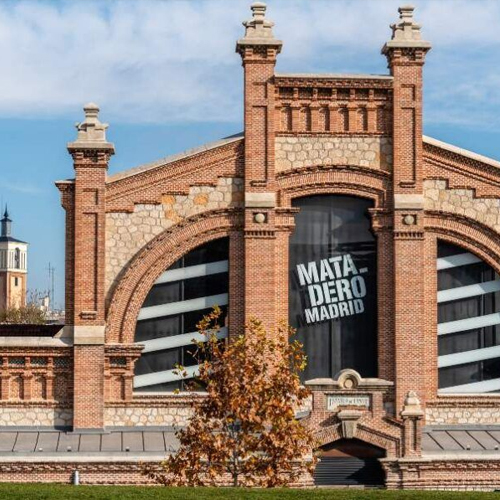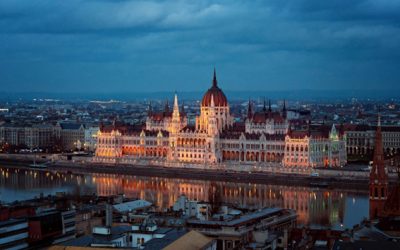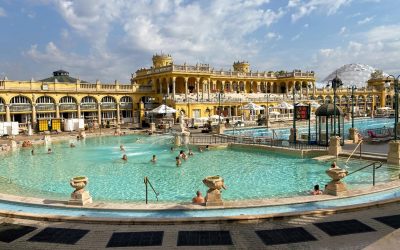In the bustling city of Madrid, there is one place that stands out as a meeting point for artists, creatives and cultural enthusiasts: Matadero Madrid. This former municipal slaughterhouse has been revitalized and transformed into an innovative cultural center, becoming a symbol of artistic renaissance and cultural expression in the Spanish capital. In this article, we will explore the history, architecture and diverse activities that make Matadero Madrid a must-see destination for art and culture lovers.
A look at the history of Matadero Madrid
Originally built in 1911, Matadero Madrid was an important livestock slaughtering and processing center in the city for many years. However, as Madrid evolved, the need for a slaughterhouse in the heart of the city diminished, and the complex was closed in 1996. Fortunately, instead of being abandoned or demolished, it was decided to give it a new life as a cultural space.
The renovation of Matadero Madrid
The rehabilitation of Matadero Madrid was an ambitious project that sought to preserve the history and industrial architecture of the site, while adapting it to the needs of a modern cultural center. The result is a unique environment that combines industrial elements with a contemporary aesthetic. The former slaughtering halls have been converted into flexible and versatile spaces that host a wide variety of events and exhibitions.
Diverse cultural activities
Matadero Madrid has established itself as one of the city’s cultural epicenters, hosting a wide range of activities and events spanning visual arts, theater, music, dance, film and more. Its spaces include exhibition halls, theaters, dance studios, concert halls, movie theaters and outdoor areas where events and festivals are held.
The center is also dedicated to the promotion of creativity and artistic experimentation. It hosts artistic residencies, workshops and laboratories that support emerging artists and allow them to develop and showcase their work. In addition, Matadero Madrid organizes educational activities and community programs to engage the local community and promote access to culture.
Exploring Matadero Madrid
When you visit Matadero Madrid, you are immersed in a vibrant and stimulating environment. You can browse the contemporary art exhibitions in its galleries, enjoy a play or dance performance in one of its theaters, attend live music concerts in its concert halls, or simply stroll through the outdoor spaces and enjoy the artistic atmosphere.
In addition to cultural activities, Matadero Madrid has a wide selection of restaurants, cafes and stores. You can enjoy a meal or a drink in one of its cozy establishments, or explore the stores specializing in art, design and unique items.
One of the highlights of Matadero Madrid is its events program. Throughout the year, the center hosts a number of festivals, fairs and special events that attract a diverse crowd of visitors. From film and music festivals to art and design fairs, there is always something exciting and unique to discover at Matadero Madrid.
In addition, Matadero Madrid is strategically located in the Arganzuela neighborhood, an area in constant growth and development. This makes it a cultural reference point not only for Madrid residents, but also for tourists visiting the city. The center is easily accessible by public transportation, making it a convenient destination for those wishing to explore the city’s cultural scene.
Matadero Madrid is much more than an old slaughterhouse turned cultural center. It is a dynamic and avant-garde space that has managed to reinvent itself and become a cultural reference in the city of Madrid. With its impressive architecture, its varied program of cultural activities and its focus on creativity and experimentation, Matadero Madrid has earned its place as one of the most exciting cultural destinations in the Spanish capital. If you have the opportunity to visit Madrid, don’t miss the experience of immersing yourself in the energy and creativity of Matadero Madrid.
Who manages the Matadero Madrid?
Matadero Madrid is managed by the Madrid City Council, through its Culture and Sports area. The cultural center operates under the responsibility of the Matadero Madrid Autonomous Organization. This entity is responsible for the programming, management and promotion of all the activities that take place in the complex.
The Matadero Madrid Autonomous Organization is governed by an administrative structure and has a team of professionals in charge of event coordination, space management, relations with artists and collaborators, as well as the development of educational and community programs. They work in close collaboration with artists, creators and other cultural institutions to offer a diverse and constantly evolving program.
In addition, the Matadero Madrid also establishes alliances and collaborations with various cultural and educational entities, both national and international, to enrich its offer and promote cultural exchange.
In short, the management of Matadero Madrid falls to the Madrid City Council through the Matadero Madrid Autonomous Organization, which is responsible for ensuring the operation, programming and promotion of this important cultural center of the city.
Why is it called Matadero de Madrid?
The Matadero de Madrid received its name because of its original function as a municipal slaughterhouse. It was built in 1911 to house the city of Madrid’s livestock slaughter and processing facilities. For many years, it played a key role in the city’s meat supply chain, providing a space where the slaughter and butchering of animals was carried out to supply the local market.
The name “Slaughterhouse” refers directly to the specific function that the building originally served. However, after its closure in 1996, the space was transformed into a cultural center and underwent a complete metamorphosis. Although it retained the original name, the term “Matadero” has been redefined and is now mainly associated with the place that hosts a wide range of artistic, cultural and creative activities in Madrid.
What is done in the Matadero of Madrid?
A wide variety of cultural and artistic activities take place at the Matadero Madrid. The space has become an important center for cultural creation and dissemination in the city of Madrid. Some of the activities that take place in the Matadero de Madrid are the following:
Art exhibitions
The center hosts contemporary art exhibitions in its galleries and exhibition spaces. These exhibitions feature a wide range of artistic disciplines, such as painting, sculpture, photography, video art, installations and more.
Theater and dance
Matadero Madrid has theatrical spaces and dance studios where theater, dance shows and performances are staged. It hosts both professional companies and emerging artists, promoting diversity and experimentation in the performing arts.
Live music
The center has concert halls and outdoor spaces where live music concerts are presented. From concerts by local bands to performances by international artists, music at Matadero Madrid encompasses a wide variety of genres and styles.
Film and audiovisual
Film screenings, thematic film series, film festivals and events related to the audiovisual world are held. These activities promote the dissemination of independent cinema, auteur cinema and other forms of audiovisual expression.
Workshops and laboratories
Matadero Madrid offers spaces dedicated to workshops and creative laboratories, where educational activities and artistic experimentation take place. These workshops are open to artists, creators and the general public, providing the opportunity to learn, create and participate in cultural projects.
In addition to these main activities, Matadero Madrid also hosts special events, fairs, conferences, meetings and community programs that encourage local community participation and promote cultural diversity.
What are the opening hours of Matadero Madrid?
Matadero Madrid’s hours may vary depending on the activities and events scheduled. In general, the cultural center follows the following opening hours:
Tuesdays to Fridays: Matadero opens its doors at 4:00 pm.
Saturdays, Sundays and holidays: Opening is at 11:00 am.
It is important to note that these opening hours are indicative and may be subject to change depending on the specific programming of each day. Therefore, it is advisable to consult Matadero Madrid’s official website or contact the center for updated information on opening hours, especially if you have specific plans or wish to attend a particular event.
In addition, some special events or activities may take place outside regular opening hours, such as evening shows or film screenings. These additional times are announced in the Matadero Madrid program and are usually specified for each particular event.
In summary, Matadero Madrid’s regular opening hours are 16:00 from Tuesday to Friday and 11:00 on Saturdays, Sundays and holidays. However, it is advisable to check specific opening hours on the website or contact the center directly for updated information on opening hours and scheduled activities.
Where is Matadero de Madrid?
The Matadero Madrid is located in the neighborhood of Arganzuela, in the southern part of the city of Madrid, Spain. The exact address is:
Matadero Madrid
Paseo de la Chopera, 14
28045 Madrid
The location of the cultural center is very accessible and has good public transport connections. It can be easily reached by metro, using line 3 (yellow line) to “Legazpi” station, which is just a few minutes walk from the Matadero. It can also be accessed by bus, with several lines having stops nearby, and by bicycle using the bike path routes available in the area.
Given its central and well-connected location, the Matadero Madrid is easily accessible for both Madrid residents and visitors wishing to explore the city’s cultural offerings.
If you plan to visit the Matadero Madrid, it is advisable to check parking availability in the area, as it may be limited. It is also advisable to consult the Matadero’s official website or use public transportation services for up-to-date information on access options and the most convenient routes.
At Hotel Akeah we put at your disposal our 64 double and functional rooms in the centre of Madrid in the heart of the Malasaña neighbourhood. We also have a rooftop swimming pool so you can relax after the festival.
Book your room now at [email protected] or call us on +34 910 284 776 or click here.




